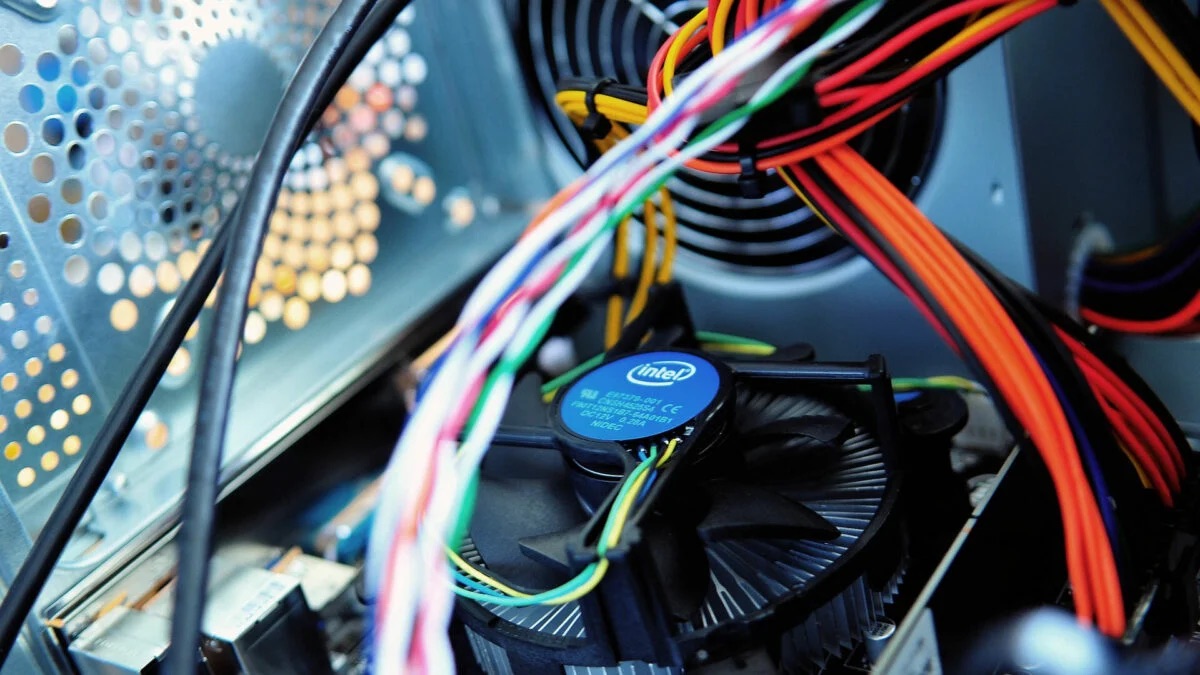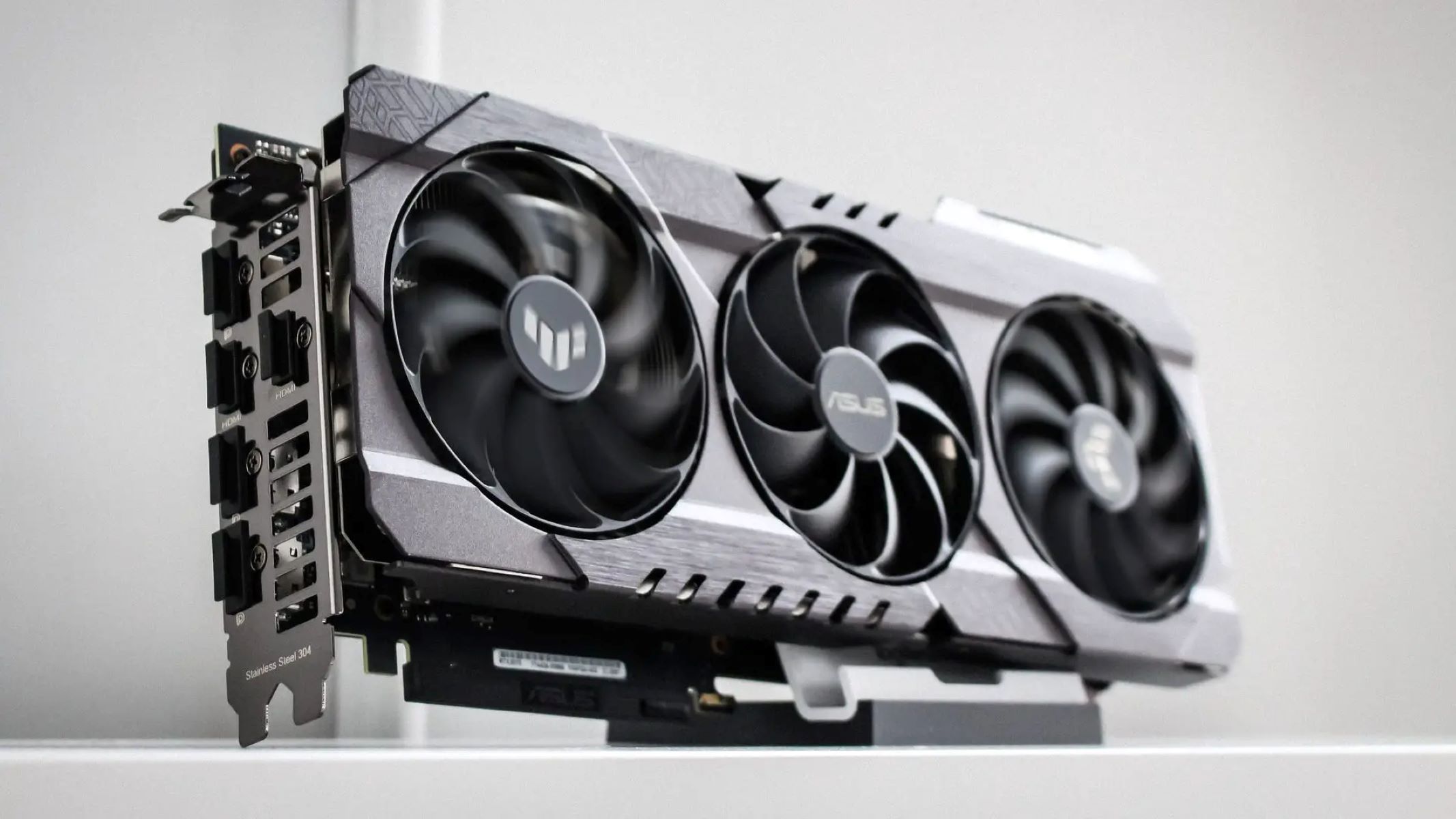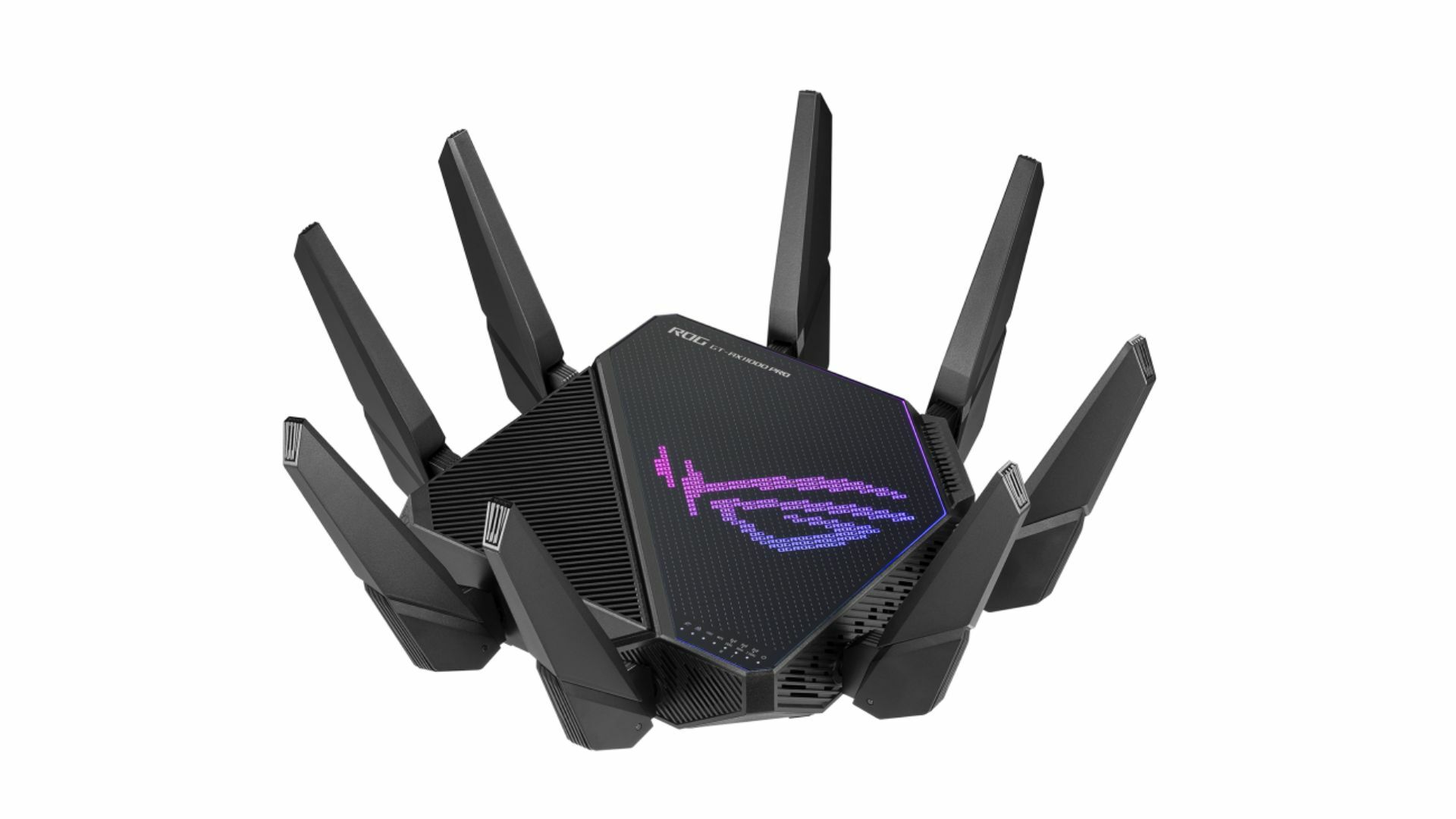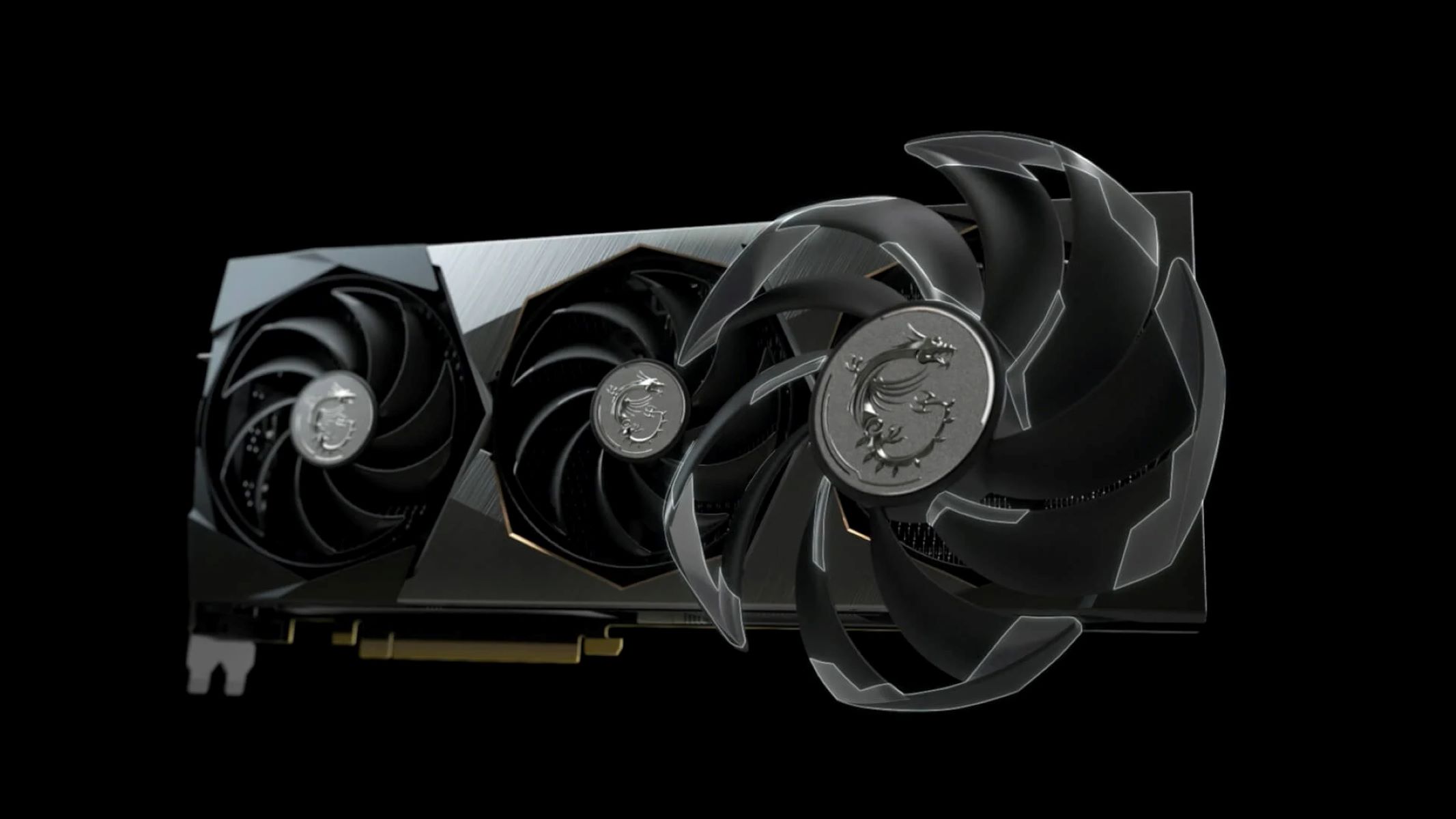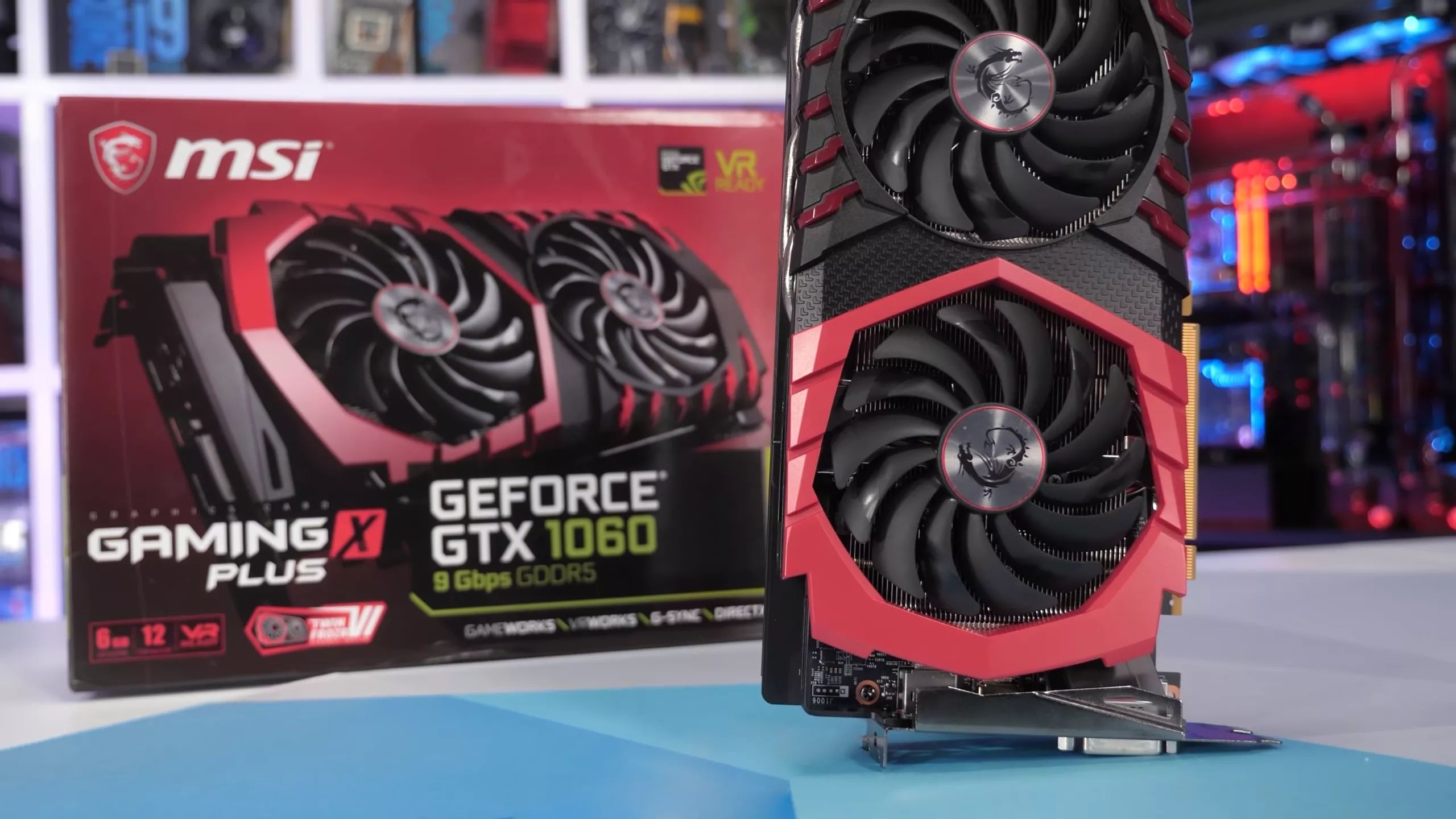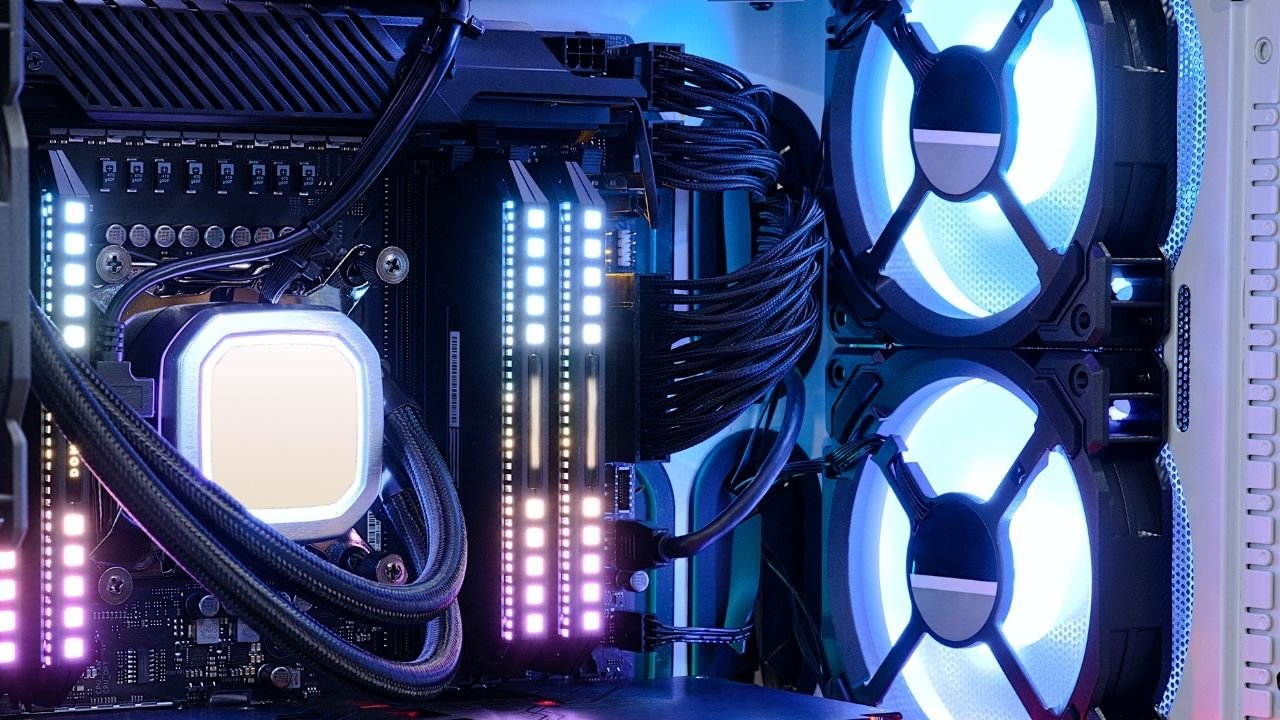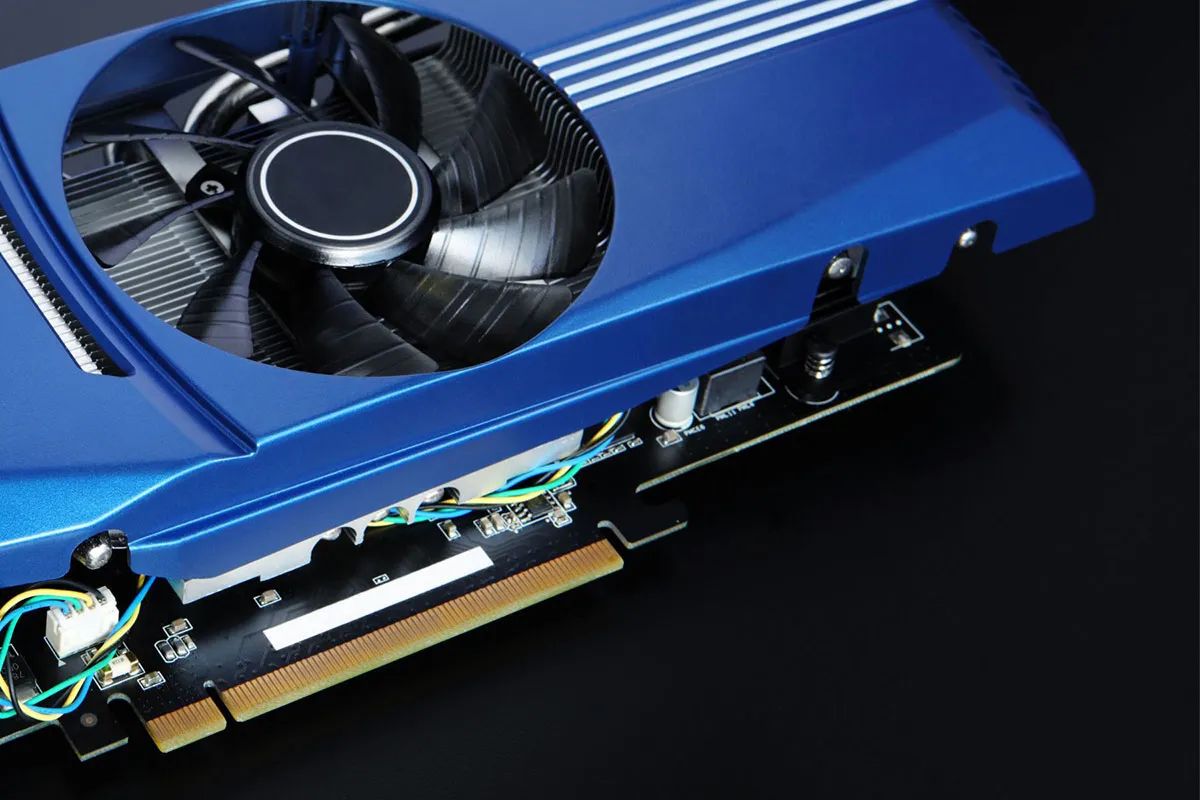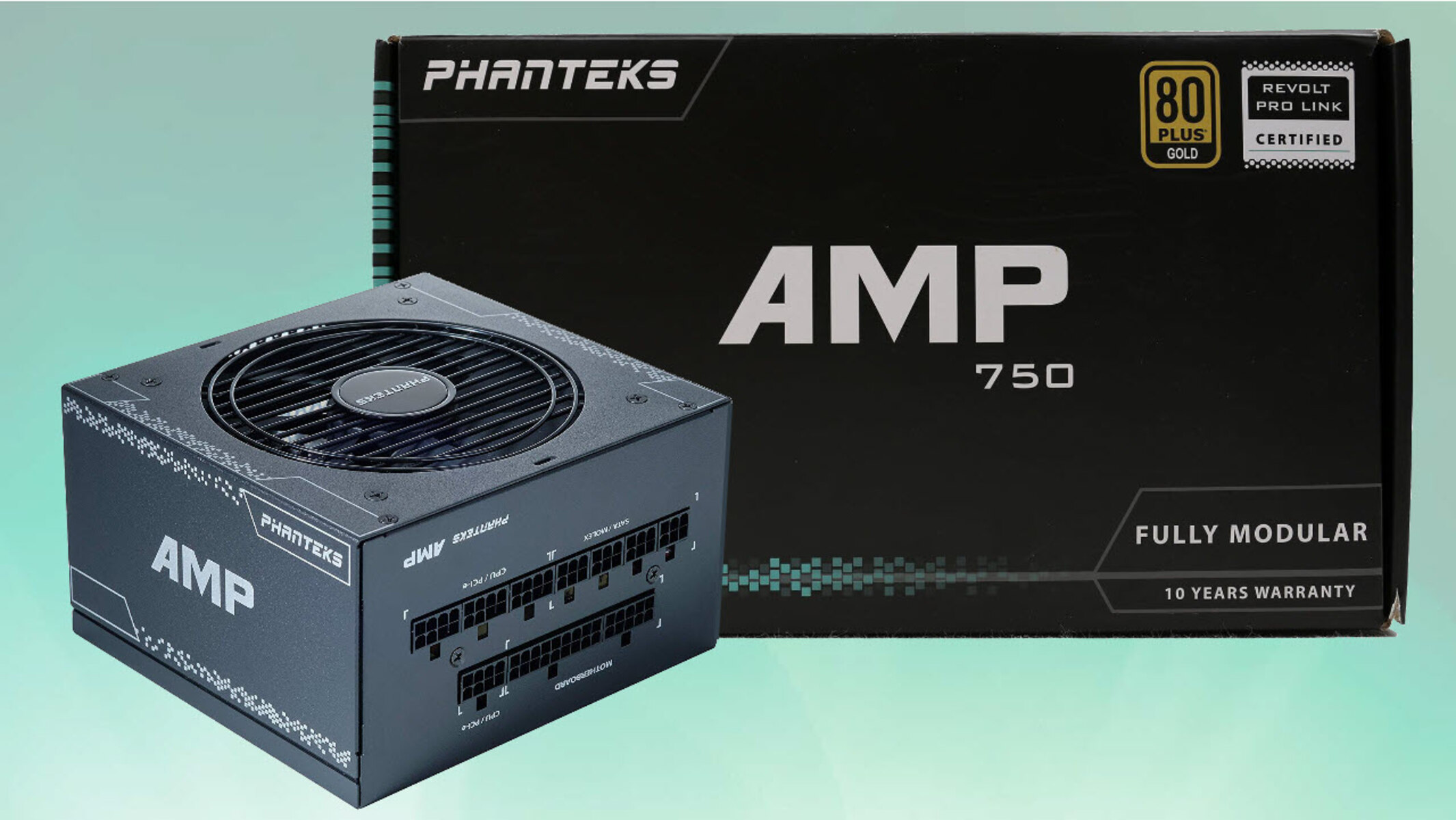Introduction
Computer case fans play a vital role in maintaining the overall temperature and performance of your computer. They are responsible for keeping the internal components cool by expelling hot air and promoting airflow within the case. However, it is important to have a basic understanding of how these fans operate, especially when it comes to their amperage usage.
Knowing how many amps a computer case fan uses is crucial for several reasons. First and foremost, it helps you determine whether your power supply can handle the load of the fan. If the fan draws too much current, it may put a strain on the power supply and lead to system instability or even failure. Additionally, understanding the amperage of your computer case fan allows you to calculate the overall power consumption of your system, ensuring that you have adequate cooling and power supply capabilities.
But how exactly do you find out the amperage of a computer case fan? Well, it’s actually quite simple. Most computer case fans have their amperage specifications listed on the fan itself or in the product documentation. The amperage, often measured in milliamps (mA), indicates the amount of current that the fan draws from the power supply.
It is important to note that the amperage usage of a computer case fan can vary depending on several factors. Factors such as fan speed, size, design, and the load on the system can all affect the amperage draw. Therefore, it is essential to consider these factors when evaluating the power requirements of your computer case fans.
In this article, we will explore how to find out the amperage of a computer case fan, factors that can affect their amperage usage, and the typical amperage range for these fans. We will also discuss the importance of proper power supply and cooling for computer case fans and answer some commonly asked questions regarding their amperage usage. So, let’s get started!
What is a computer case fan?
A computer case fan, also known as a cooling fan or chassis fan, is a crucial component of a computer system. Its purpose is to regulate the temperature inside the computer case by circulating air and dissipating heat generated by various internal components, such as the central processing unit (CPU), graphics card, and hard drives.
Computer case fans come in various sizes, ranging from 80mm to 200mm, and are typically mounted on the front, side, or rear of the computer case. They are designed to pull cool air into the case and push out hot air, creating a constant flow of air that helps prevent overheating and prolong the lifespan of the computer components.
The fan blades, usually made of plastic, are angled and positioned in a way that maximizes airflow. When the fan rotates, it creates a low-pressure zone behind the blades, causing air to be drawn in from the front or sides of the fan. As the air passes over the components, it absorbs heat, and then exits the case through the rear or top vents.
Most computer case fans are powered through the motherboard or an external power source and connect to the motherboard’s fan headers or power supply connectors. They can be controlled either manually or automatically, depending on the computer’s settings and the fan’s capabilities.
Some computer case fans come equipped with features like adjustable fan speeds, RGB lighting, and even noise dampening technologies to provide users with customizable cooling solutions. These fans offer flexibility in terms of performance and aesthetics, allowing users to create a personalized and efficient cooling system for their computers.
Overall, computer case fans are essential components for maintaining optimal operating temperatures and preventing overheating issues in computers. They not only ensure the stability and efficiency of the system but also contribute to a quieter and more comfortable computing experience.
Why is it important to know how many amps a computer case fan uses?
Understanding how many amps a computer case fan uses is crucial for several reasons. It allows you to ensure that your power supply can handle the load of the fan and prevents potential issues that may arise from inadequate power delivery. Here are some key reasons why knowing the amperage of a computer case fan is important:
1. Compatibility with power supply: Different computer case fans have varying amperage requirements, and it is essential to ensure that your power supply can deliver enough current to meet these demands. If a fan draws more current than the power supply can provide, it can cause system instability, shutdowns, or even damage to the components.
2. System stability and performance: Insufficient current supply to the computer case fan may result in inconsistent or insufficient cooling. This can lead to increased temperatures inside the computer case, potentially affecting the overall system stability and performance. By knowing the amperage of the fan, you can choose a power supply that can handle the load, ensuring reliable and consistent cooling.
3. Power consumption calculations: Determining the amperage of a computer case fan is essential for calculating the power consumption of your system. This knowledge allows you to assess the overall power requirements, ensuring that other components, such as the CPU, graphics card, and storage drives, receive sufficient power without overloading the power supply.
4. Cooling capacity: Computer case fans play a vital role in maintaining the temperature within the system. By knowing the amperage of the fan, you can assess its cooling capacity and determine if it meets your specific requirements. This knowledge helps ensure that your computer remains cool even during intensive tasks or overclocking scenarios.
5. Troubleshooting: In cases where you experience cooling issues or unusual behavior, knowing the amperage of your computer case fan can assist in troubleshooting. It allows you to identify if the fan is drawing more or less current than expected, helping pinpoint if the issue lies with the fan itself or other components or settings within the system.
By understanding the amperage usage of your computer case fan, you can make informed decisions regarding power supply compatibility, cooling capacity, and overall system stability. This knowledge plays a critical role in optimizing your computer’s performance and ensuring a reliable and efficient computing experience.
How do I find out the amperage of a computer case fan?
Discovering the amperage usage of a computer case fan is a simple process. You can find this information on the fan itself or in the product documentation. Here are some methods to help you determine the amperage of a computer case fan:
1. Check the fan label: Most computer case fans have a label on the fan frame that provides important specifications, including the amperage. Look for terms like “A” or “mA” followed by a number representing the amperage value. This is often measured in milliamps (mA).
2. Consult the product documentation: If you don’t find the amperage information on the fan label, refer to the product documentation that came with the fan. The documentation should contain detailed specifications, including the amperage usage of the fan.
3. Visit the manufacturer’s website: If the fan label or documentation does not provide the amperage details, consider visiting the manufacturer’s website. Look for the product page or support section related to your specific fan model. Manufacturers often provide comprehensive specifications for their products, including the amperage rating.
4. Online research: In cases where the fan label, documentation, or manufacturer’s website don’t yield the desired information, you can turn to online resources. Look for reputable computer hardware forums, tech websites, or online retail platforms that may have user reviews or product listings with the amperage specifications for your specific fan model.
Once you obtain the amperage value of your computer case fan, it’s essential to keep this information for future reference. Having the amperage on hand allows you to make informed decisions when it comes to choosing a compatible power supply, calculating power consumption, or troubleshooting any potential cooling issues in your computer system.
Remember that the amperage usage of a computer case fan can vary depending on factors such as fan speed, size, design, and system load. Therefore, it’s important to consider these factors when evaluating the power requirements of your computer case fans.
By knowing the amperage of your computer case fan, you can ensure that you have adequate power supply and cooling capabilities to maintain the stability and performance of your computer system.
Factors that can affect the amperage usage of a computer case fan
The amperage usage of a computer case fan can vary depending on several factors. It’s important to consider these factors when evaluating the power requirements of your computer system. Here are some key factors that can affect the amperage usage of a computer case fan:
1. Fan speed: The speed at which a computer case fan operates can have an impact on its amperage usage. Typically, fans with higher speeds may draw more current compared to those running at lower speeds. This is because higher fan speeds require more electrical power to maintain the increased rotational speed of the fan blades.
2. Fan size: The physical size of a computer case fan can influence its amperage usage. Larger fans tend to have a higher amperage rating due to their larger motor and blade size, requiring more power to operate. On the other hand, smaller fans may have lower amperage requirements as they have smaller motors and generate less airflow.
3. Fan design: The design features of a computer case fan can also impact its amperage usage. Fans with advanced features like adjustable speeds, RGB lighting, or additional functionalities may require more power to operate these extra features, resulting in higher amperage usage compared to basic fans with standard functionalities.
4. Load on the system: The overall load on the computer system can affect the amperage usage of the case fan. When the system’s components, such as the CPU or graphics card, are under heavy load, they generate more heat, requiring the fan to work harder to dissipate it. This increased workload can result in higher amperage usage from the fan as it needs to spin at faster speeds to provide adequate cooling.
5. Fan control settings: Computer case fans equipped with fan control settings, such as PWM (Pulse Width Modulation) or voltage control, can adjust their speed based on temperature or user preferences. The selected fan control setting can affect the amperage usage of the fan. Higher fan speeds controlled by the system or the user will consume more power, resulting in increased amperage draw.
It’s important to consider these factors when selecting and managing computer case fans in your system. Understanding their impact on amperage usage not only helps you choose an appropriate power supply but also enables you to optimize cooling performance and power consumption. Be sure to refer to the fan’s specifications and documentation to ensure that the chosen fan aligns with your system’s power capabilities and cooling needs.
By taking these factors into account, you can make informed decisions in building and maintaining a well-balanced and efficient computer system that adequately addresses power supply requirements while ensuring effective cooling for optimal performance and longevity.
Typical amperage range for computer case fans
Computer case fans typically have a range of amperage values that can vary depending on factors such as fan size, speed, design, and manufacturer. While the specific amperage ratings may differ between fan models, there is a general range that can help you understand the typical amperage usage of computer case fans.
Most computer case fans have amperage ratings ranging from 0.1A to 0.5A. This range is commonly measured in milliamps (mA) and indicates the amount of current the fan draws from the power supply.
Smaller case fans, such as those with a size of 80mm or 92mm, tend to have lower amperage ratings. These fans typically fall within the range of 0.1A to 0.3A. They are suitable for cases with limited space or for applications where lower noise levels and power consumption are desired.
Medium-sized case fans, such as those around 120mm, usually have amperage ratings between 0.2A to 0.4A. These fans strike a balance between size, noise level, and airflow, making them a popular choice for many computer systems.
Larger case fans, such as those with a size of 140mm or 200mm, may have higher amperage ratings. These fans typically range from 0.3A to 0.5A or higher. Due to their larger size, they can move more air at lower speeds, providing efficient cooling with potentially less noise.
It’s important to note that amperage ratings can differ between fans even within the same size category. Factors such as fan design, bearing type, and additional features can further contribute to variations in amperage usage.
When choosing computer case fans for your system, it’s crucial to consider not only the amperage rating but also other factors like airflow, noise level, and compatibility with your power supply. Ensuring that your power supply can handle the total amperage draw of all installed fans is essential for maintaining system stability and preventing power-related issues.
Whenever possible, refer to the specifications and documentation provided by the fan manufacturer to obtain accurate information regarding the amperage ratings of their products. Using this information, you can ensure proper power supply compatibility and select the right combination of fans for efficient cooling and optimal performance in your computer system.
How to calculate the total amperage of multiple computer case fans
Calculating the total amperage of multiple computer case fans is important to ensure that your power supply can handle the combined load. To determine the total amperage, you need to consider the amperage rating of each fan and add them together. Here’s how to calculate the total amperage of multiple computer case fans:
1. Identify the amperage rating: Start by identifying the amperage rating of each computer case fan. You can find this information on the fan label, in the product documentation, or by visiting the manufacturer’s website. The amperage is typically measured in milliamps (mA).
2. Convert milliamps to amps: If the amperage rating is given in milliamps, you may need to convert it to amps for accurate calculations. Simply divide the milliamp value by 1000 to obtain the amperage in amps. For example, if a fan has an amperage rating of 300mA, divide 300 by 1000 to get 0.3A.
3. Add the amperage ratings: Once you have the amperage ratings for each fan, add them together to calculate the total amperage. For example, if you have three fans with amperage ratings of 0.2A, 0.3A, and 0.4A respectively, the total amperage would be 0.2A + 0.3A + 0.4A = 0.9A.
4. Consider the power supply capacity: After calculating the total amperage of the computer case fans, you need to ensure that your power supply has enough capacity to handle the combined load. Check the specifications of your power supply to determine its maximum output on the 12V rail, which is where case fans typically connect. Ensure that the total amperage of the fans is within the limits of your power supply’s capacity.
5. Account for other components: Keep in mind that the total amperage draw of your computer case fans should be considered along with other components in your system, such as the CPU, graphics card, and storage devices. Take into account the power requirements of these components and ensure that your power supply can handle the overall power consumption of your system.
By calculating the total amperage of multiple computer case fans, you can determine whether your power supply is capable of providing sufficient power to support the combined load. This helps ensure stable operation, prevent power-related issues, and maintain an efficient and reliable cooling system for your computer.
How much power does a computer case fan consume?
The power consumption of a computer case fan primarily depends on its amperage usage and the voltage supplied to it. Generally, the power consumption of a computer case fan can be calculated using the formula: Power (in watts) = Voltage (in volts) × Amperage (in amps).
For example, if a fan operates at 12 volts (common for computer case fans) and has an amperage rating of 0.3 amps, the power consumption would be 12 volts × 0.3 amps = 3.6 watts.
It’s important to note that the power consumption mentioned above represents the maximum power that the fan could potentially consume. In reality, the fan may not always operate at its maximum power, as the actual power consumed can vary depending on factors such as fan speed, load on the system, and fan control settings.
Lowering the fan speed is a common method to reduce power consumption. Many computer case fans come with adjustable speed settings or can be controlled through software or hardware. By reducing the fan speed, the power consumption can be decreased, resulting in lower energy usage and potentially quieter operation.
Additionally, advancements in fan technologies have led to the development of more energy-efficient models. These fans incorporate features such as low-power motors, improved blade designs, and better bearing systems, resulting in reduced power consumption compared to older fan models.
While the power consumption of individual case fans is relatively low, it is important to consider the total power consumption of all components in your computer system. This includes the CPU, graphics card, storage drives, and any other peripherals. Ensuring that your power supply has sufficient capacity to handle the combined power demands of all components is crucial for stable and efficient system operation.
Overall, the power consumption of a computer case fan can vary depending on various factors. It is essential to consider the amperage rating, voltage supply, fan speed, and control settings to estimate the actual power consumption accurately. By selecting energy-efficient fans and managing their speeds effectively, you can minimize power consumption, reduce energy costs, and maintain an optimal balance between cooling performance and power efficiency in your computer system.
The importance of proper power supply and cooling for computer case fans
Proper power supply and cooling are crucial elements for the effective operation of computer case fans. Ensuring that your system has a compatible power supply and adequate cooling capabilities is essential for the overall performance, stability, and longevity of your computer system. Here’s why proper power supply and cooling are important for computer case fans:
1. Power supply compatibility: Having a power supply that can adequately handle the power demands of your computer case fans is essential. If the power supply cannot provide enough current to meet the needs of the fans, it can lead to unstable system operation, random shutdowns, or even damage to the components. Ensuring compatibility between the power supply and the total amperage draw of the fans is critical for reliable and efficient system performance.
2. Preventing component overheating: Computer case fans play a vital role in maintaining optimal operating temperatures for components like the CPU, graphics card, and storage drives. Inadequate cooling can result in higher temperatures, which can negatively impact performance and even cause hardware damage. Proper airflow provided by case fans helps dissipate heat effectively, preventing overheating and prolonging the lifespan of the components.
3. Enhancing system stability: Overheating due to insufficient cooling can lead to system instability, causing crashes, freezes, or unexpected reboots. By ensuring proper cooling through the use of case fans, airflow within the system is improved, reducing heat buildup and maintaining stable operating temperatures for all components. This helps to minimize the risk of instability and ensures smooth and reliable system operation.
4. Noise reduction: Proper cooling through strategically placed case fans helps maintain lower temperatures without resorting to high fan speeds. This can result in quieter operation, as fans don’t need to work as hard to dissipate heat. With the right combination of fans and efficient cooling, you can create a quieter computing environment while still maintaining optimal performance.
5. Maximizing performance and longevity: Effective cooling provided by proper power supply and case fans allows your computer system to operate at optimal performance levels. By preventing overheating and maintaining stable temperatures, you can maximize the lifespan of your components and avoid potential performance throttling due to excessive heat buildup. This is especially important for demanding tasks such as gaming, video editing, or other resource-intensive activities.
Proper power supply and cooling are vital aspects to consider when using computer case fans. It is important to choose a power supply that meets the power demands of the fans and ensure proper cooling airflow within the system. By doing so, you can protect your components, maintain system stability, reduce noise levels, optimize performance, and prolong the lifespan of your computer system as a whole.
Commonly asked questions about computer case fan amperage usage
When it comes to computer case fan amperage usage, there are several questions that often arise. Here, we provide answers to some commonly asked questions to help you better understand and manage the amperage requirements of your computer case fans:
1. How do I determine the amperage of a computer case fan if it is not labeled?
If the amperage is not labeled on the fan itself, you can refer to the product documentation or visit the manufacturer’s website for the specifications. Additionally, you can use a multimeter to measure the current draw of the fan while it’s in operation, but be sure to follow proper safety precautions when working with electrical components.
2. Can I use a fan with a higher amperage rating than my power supply can handle?
It is not recommended to use a fan with a higher amperage rating than your power supply can handle. Doing so may overload the power supply, leading to instability or potential damage. It’s essential to ensure that the total amperage draw of all fans used in your system is within the limits of your power supply’s capacity.
3. Can I use a fan with a lower amperage rating than recommended?
Using a fan with a lower amperage rating than recommended is generally safe, as it will not put excessive load on your power supply. However, it’s important to ensure that the fan provides sufficient airflow for the components it is intended to cool. A lower amperage fan may run at lower speeds and potentially result in reduced cooling capabilities.
4. How can I reduce the amperage usage of my computer case fans?
To reduce the amperage usage of your computer case fans, you can lower their speeds or invest in more energy-efficient models. Adjusting the fan speed can be done through the system’s BIOS settings or using software applications that allow fan control. Choosing fans with lower amperage ratings or energy-efficient designs can also help minimize power consumption.
5. Can I connect multiple fans to a single fan header on the motherboard?
While it is possible to connect multiple fans to a single fan header on the motherboard using splitters or hub devices, it is important to consider the total amperage draw of all the fans. The combined amperage should not exceed the maximum output of the fan header. Alternatively, you can opt for powered fan hubs or directly connect fans to the power supply using appropriate adapters.
These are just a few of the commonly asked questions about computer case fan amperage usage. It’s important to keep in mind that other factors, such as fan speed, size, and load on the system, can also impact the amperage requirements. Always refer to the fan’s specifications and follow proper guidelines to ensure optimal performance, compatibility, and safety when working with computer case fans and their electrical requirements.
Conclusion
Understanding the amperage usage of computer case fans is essential for maintaining a stable and efficient computer system. By knowing the amperage of your fans, you can ensure compatibility with your power supply, calculate power consumption, and make informed decisions when it comes to cooling and system performance.
We explored various aspects related to computer case fan amperage usage in this article. We learned how to find out the amperage of a computer case fan through fan labels, product documentation, manufacturer websites, and online research. We also discussed the factors that can affect the amperage usage of computer case fans, such as fan speed, size, design, and system load.
Furthermore, we delved into the typical amperage range for computer case fans and how to calculate the total amperage of multiple fans. Understanding these calculations and considering the power supply capacity ensures stability, prevents overheating, and maximizes system performance.
Proper power supply and cooling are vital for the effective operation of computer case fans. A compatible power supply that can handle the total amperage draw of the fans enables reliable and efficient system performance. Adequate cooling provided by case fans helps maintain optimal temperatures, prevents component overheating, and enhances system stability.
We also addressed commonly asked questions about computer case fan amperage usage, providing insights on determining amperage, power supply compatibility, reducing amperage usage, and connecting multiple fans to a single header.
In conclusion, understanding the amperage usage of computer case fans is crucial for maintaining a well-functioning and reliable computer system. By considering the amperage, you can ensure proper power supply compatibility, optimize cooling performance, and maximize the lifespan of your components. With this knowledge, you can make informed decisions when selecting and managing computer case fans, ultimately creating an efficient and optimal computing experience.







